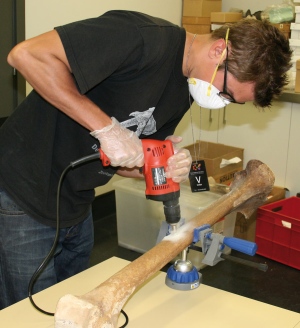Heaven is real, says neurosurgeon who claims to have visited the afterlife
Dr. Eben Alexander has taught at Harvard Medical School and has earned a strong reputation as a neurosurgeon. And while Alexander says he's long called himself a Christian, he never held deeply religious beliefs or a pronounced faith in the afterlife.
But after a week in a coma during the fall of 2008, during which his neocortex ceased to function, Alexander claims he experienced a life-changing visit to the afterlife, specifically heaven. "According to current medical understanding of the brain and mind, there is absolutely no way that I could have experienced even a dim and limited consciousness during my time in the coma, much less the hyper-vivid and completely coherent odyssey I underwent," Alexander writes in the cover story of this week's edition of Newsweek. So what exactly does heaven look like?. |  |
October 10 2012
Great-great grandmother, claimed to be world's oldest person dies at 132
She lived through the Russian Revolution and well over a century of history, but a Georgian woman who claimed to be the world’s oldest living person has died at the age of 132.
Antisa Khvichava, who lived in the remote mountain village of Sachino in Georgia, held Soviet-era documents which said she was born on 8 July 1880, but her age was contested and never proven. The woman, who lived with her 42-year-old grandson in an idyllic vine-covered country house in the mountains, retired from her job as a tea and corn picker in 1965, when she was aged 85. She was said to have had 12 grandchildren, 18 great-grandchildren, and four great-great grandchildren – and attributed her good health to drinking a small amount of local brandy every day. |  |
October 10 2012
Man dies after eating dozens of bugs and worms in a live bug-eating contest

A man has died after winning a live cockroach-eating competition in Florida.
32-year-old Edward Archbold became ill after eating dozens of live cockroaches, worms and other bugs at Ben Siegel Reptile Store, near Miami. The grand prize in the competition was a python.
Mr Archbold won the competition, in which 30 other people took part, but was taken ill within minutes of it ending. He collapsed in front of the shop shortly after, and was rushed to hospital where he was pronounced dead.
32-year-old Edward Archbold became ill after eating dozens of live cockroaches, worms and other bugs at Ben Siegel Reptile Store, near Miami. The grand prize in the competition was a python.
Mr Archbold won the competition, in which 30 other people took part, but was taken ill within minutes of it ending. He collapsed in front of the shop shortly after, and was rushed to hospital where he was pronounced dead.
October 10 2012
Skulls From Sacrificial Rituals Found in Temple
Archaeologists have unearthed gruesome evidence of brutal Aztec rituals by uncovering 50 skulls and over 250 jaw bones at the Templo Mayor in Tenochtitlan (modern Mexico City).
Found at one sacrificial stone below a ceremonial platform called the "cuauhxicalco," the human remains date back more than 500 years and represent the largest number of skulls ever found in one offering. Used in rituals associated with the worship of Mictlantecuhtli, god of death, the skulls were unearthed in different locations: 45 appeared to have just been dumped on top of the stone, while the remaining five were buried under it. |
October 10 2012
Saudi eases access to long-hidden ancient ruins
Fully draped in a black veil, Irish blonde Angela Miskelly stares out in awe as she strolls through Al-Hijr, the ancient Saudi city of tombs carved into rose-coloured sandstone mountains. "Spectacular... wonderful... breathtaking," she says. "But where are the tourists? If we had a site like this in my country, we would have millions of tourists!"
Dating back to the second century BC, the Nabataean archaeological site, also known as Madain Saleh, has long been hidden from foreign visitors in this ultra-conservative kingdom that rarely opens up to tourists. Saudi Arabia is thought to have been wary of archaeologists and scientists seeking to study its ancient ruins for fear their findings could shine the spotlight on pre-Islamic civilisations that once thrived there. |  |
October 10 2012
Will Humans Eventually All Look Like Brazilians?
It really happened: Six generations of inbreeding spanning the years 1800 to 1960 caused an isolated population of humans living in the hills of Kentucky to become blue-skinned.
The startlingly blue people, all descendants of a French immigrant named Martin Fugate and still living near his original settlement on the banks of Troublesome Creek when hematologists studied them in the 1960s, turned out to have a rare blood condition called methemoglobinemia. A recessive gene was pairing with itself to change the molecular composition of their blood, making it brown as opposed to red, which tinted their skin blue. |  |
October 10 2012
The English inspired Vikings to build cities
When Danish Vikings sailed across the North Sea and conquered England, they left their mark on the English language and place names. That’s common knowledge, at least to historians.
What’s perhaps less known is that the influence cut both ways. Although England was under Danish rule in the Viking Age, the English were culturally and politically more sophisticated than their neighbours to the east. Historian Marie Bønløkke Spejlborg was one of the more than 300 Norse mythology researchers who attended the 15th International Saga Conference held recently in Aarhus, Denmark. |
October 10 2012
Human-safe robot could revolutionise manufacturing

Properly designed, robots can be useful in a lot of practical, everyday scenarios. Still, although they can be taught to make pancakes, fold towels, and perform other specialised tasks, the long-awaited general-purpose automaton has remained tantalisingly out of reach.
That looks set to change, with today's unveiling of Baxter, an all-purpose robot built by the Boston-based firm Rethink Robotics.
Baxter won't be coming to a kitchen near you any time soon - according to the company's release, it is designed to excel at fast, repetitive labour in manufacturing jobs. And at $22,000 a pop, you probably can't afford one in your house anyway.
That looks set to change, with today's unveiling of Baxter, an all-purpose robot built by the Boston-based firm Rethink Robotics.
Baxter won't be coming to a kitchen near you any time soon - according to the company's release, it is designed to excel at fast, repetitive labour in manufacturing jobs. And at $22,000 a pop, you probably can't afford one in your house anyway.
October 10 2012
Nuclear fusion – your time has come
Harnessing nuclear fusion to create cheap, safe and sustainable energy used to be a futuristic joke. But its day is almost upon us
Every year, one typical coal-fired power station devours several million tonnes of fuel and produces even more carbon dioxide. Burning stuff has the virtue that it is simple but it is very brutal. That volume of carbon dioxide is damaging the atmosphere and, in the longer term, the fuel will run out. It is clear that the world needs an alternative to generating energy by setting fire to things. |  |
October 10 2012
Did the Reign of Dinosaurs Begin, as Well as End, with a Meteorite Strike?
STOCKTON, N.J.— A huge meteorite strike may have helped the dinosaurs rise as well as fall. That's what a small crew of mud-spattered researchers who drilled down hundreds of feet in New Jersey this summer wanted to discover.
Roughly 200 million years ago, at least half the species on Earth died off over the course of about 100,000 years, both on land and in sea. This mass extinction, at the boundary between the Triassic and Jurassic periods and one of five known such events in Earth's geologic history, set the stage for dinosaurs to rise to prominence and dominate the planet's terrestrial life for the next 135 million years. |  |
October 10 2012
New Study: Challengers to Clovis-age impact theory missed key protocols

EUGENE, Ore. -- (Sept. 18, 2012) -- An interdisciplinary team of scientists from seven U.S. institutions says a disregard of three critical protocols, including sorting samples by size, explains why a group challenging the theory of a North American meteor-impact event some 12,900 years ago failed to find iron- and silica-rich magnetic particles in the sites they investigated.
Not separating samples of the materials into like-sized groupings made for an avoidable layer of difficulty, said co-author Edward K. Vogel, a professor of psychology at the University of Oregon.
Not separating samples of the materials into like-sized groupings made for an avoidable layer of difficulty, said co-author Edward K. Vogel, a professor of psychology at the University of Oregon.
October 10 2012
Mystery Mars Object is Curiosity's Litter
Depending on where you live, dropping litter out of your car window is a very unsavory habit -- at worst, it's a crime. But when you're in the business of dominating another planet, litter-dropping is the inevitable downside of doing awesome stuff in space.
Enter Curiosity: The one ton, nuclear-powered, laser-armed, six-wheeled rover. And now, unashamed interplanetary litterbug. While we were being distracted by the Red Bull Stratos skydive attempt yesterday (that ended up being aborted), Curiosity was busy playing with a scoopful of Mars dirt. Although this particular sample won't be analyzed for science, it is being used to "clean" any terrestrial contaminants from the robotic arm-mounted scoop. |
October 10 2012
Will we be the first Martians?
From ancients who worshiped the Red Planet as a fierce war god in the sky, to scientists like Percival Lowell and fantasists like Ray Bradbury, Mars has taunted Earth's adventurers with the ultimate challenge.
Now that the fear of imaginary invaders has been replaced by a frustrating search for chemicals, a more fundamental question is emerging. Could humans walk the sands of Mars, and actually live and work there? |  |
October 10 2012
"Carl Sagan with Gills": A Q&A with Bob Ballard, Discoverer of The Titanic
By his own admission, Bob Ballard is a heretic. "If I were in Tunisia, I'd be toast," he said. He likes to disprove conventional wisdom, and throw out textbooks (metaphorically speaking).
In graduate school in the 1960s he was part of a wave of young researchers who established the existence of plate tectonics. In 1979 he found black smokers, vents on the ocean floor that spew out water from within the Earth, which wasn't previously thought possible. He has helped find new and unknown life forms around deep sea vents, which "threw out the textbook" on biology and the origin of life, which was previously thought to have originated from energy captured from sunlight. |  |
October 10 2012
Stretchable skin with sensors soon to monitor health
The days of electronic circuitry with stiff circuit boards are a thing of the past; stretchable electronics are taking over. We already saw microelectronics used in sutures to monitor for infection, and now stretchable skin with microelectronics for monitoring health conditions is readying for a debut.
The key to creating sensing, stretchable skin relies on gold electrodes and other wires that are a few hundred nanometers thick. They are deposited in a serpentine fashion onto thin films of silicon wafers, then applied to the stretchable polymers. The serpentine nature of the sensor wires allows the wires to stretch with the patch. |  |
October 10 2012
Oldest color film footage dates back to 1899

As we debate the obvious visual difference between 1080p and 4K video, we can't help but notice that it wasn't that long ago in the scope of time that color motion film wasn't even a thing.
In 1899, British photographer and inventor Edward Raymond Turner patented the first color moving picture process, but it was so complicated that it was never replicated. Following Turner's blueprints and instructions for the process, researchers at the National Media Museum digitally copied three frames of film taken from two rolls that were discovered in 2009.
In 1899, British photographer and inventor Edward Raymond Turner patented the first color moving picture process, but it was so complicated that it was never replicated. Following Turner's blueprints and instructions for the process, researchers at the National Media Museum digitally copied three frames of film taken from two rolls that were discovered in 2009.
October 10 2012
Plans for giant Antarctic marine sanctuary falter
WELLINGTON, New Zealand (AP) -- Antarctica's Ross Sea is often described as the most isolated and pristine ocean on Earth, a place where seals and penguins still rule the waves and humans are about as far away as they could be. But even there it has proven difficult, and maybe impossible, for nations to agree on how strongly to protect the environment.
The United States and New Zealand have spent two years trying to agree on an Alaska-sized marine sanctuary where fishing would be banned and scientists could study climate change. U.S. Secretary of State Hillary Rodham Clinton took a strong interest in the outcome, regularly prodding diplomats, and New Zealand recently sent a delegation to Washington to hash out a tentative deal. |  |
October 10 2012
DNA has a 521-yr half-life: Genetic material can't be recovered from dinos
Few researchers have given credence to claims that samples of dinosaur DNA have survived to the present day, but no one knew just how long it would take for genetic material to fall apart. Now, a study of fossils found in New Zealand is laying the matter to rest — and putting paid to hopes of cloning a Tyrannosaurus rex.
After cell death, enzymes start to break down the bonds between the nucleotides that form the backbone of DNA, and micro-organisms speed the decay. In the long run, however, reactions with water are thought to be responsible for most bond degradation. Groundwater is almost ubiquitous, so DNA in buried bone samples should, in theory, degrade at a set rate. |  |
October 10 2012
Ancient DNA and Sumerians
A few months ago someone asked me (via email) which populations I would love to get typed (genetically that is). There is one population which did not come to mind at the time: the Sumerians. Why? Because these are arguably the first historic nation. The first self-conscious ethnic group which operated by the rules which we define as the fundamentals of literate civilization. Strangely, they are an ethno-linguistic isolate. My own assumption until lately has been that this is not too surprising, in that prior to the rise of expansive civilizations (Sargon of Akkad) there was much more linguistic and ethnic diversity than we currently see around us. Or, was evident even in the early Iron Age. In other words, the ancient Fertile Crescent may have resembled the highlands of Papua, with Hurrians, Akkadians, Gutians, Elamites, Sumerians, etc., all speaking mutually unintelligible dialects which diverged very far back in the mists of antiquity.
|  |


No comments:
Post a Comment